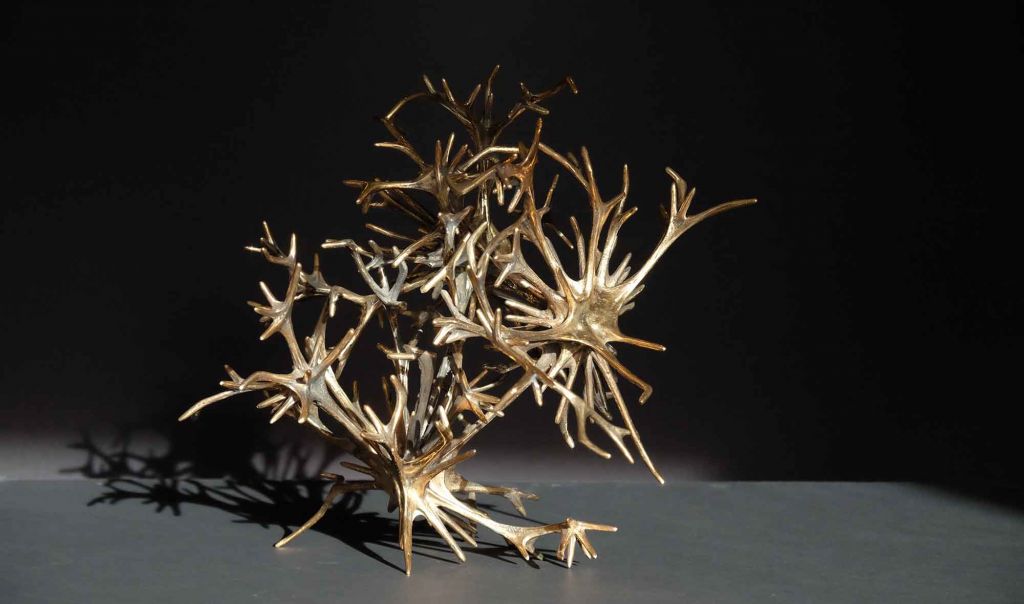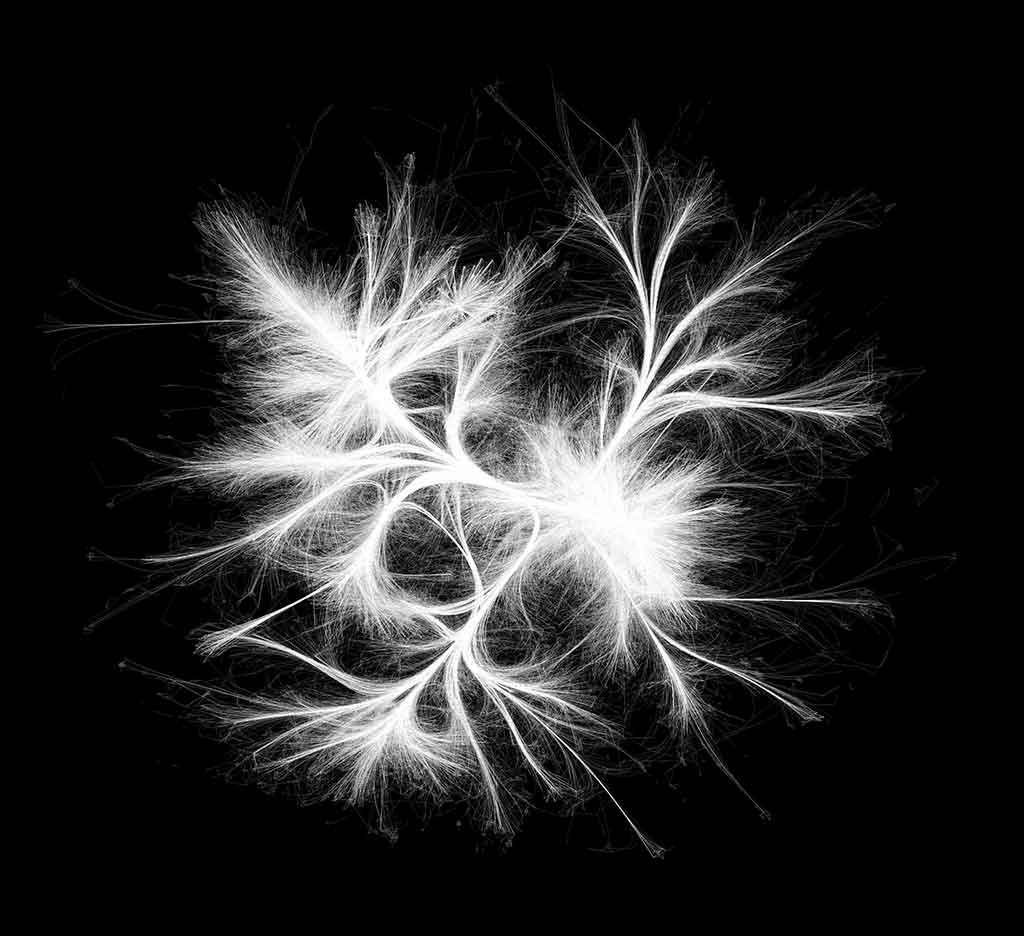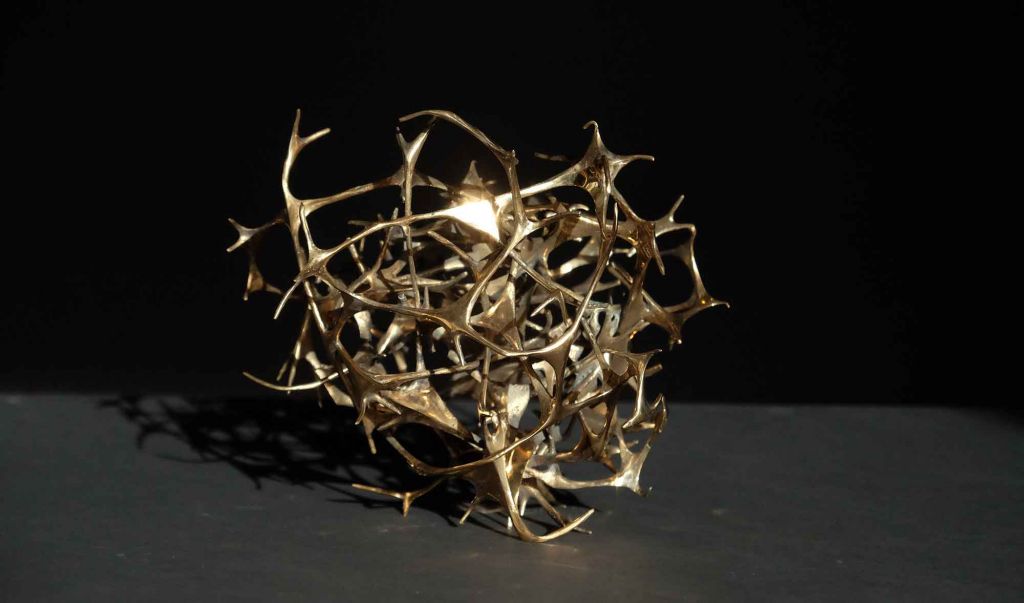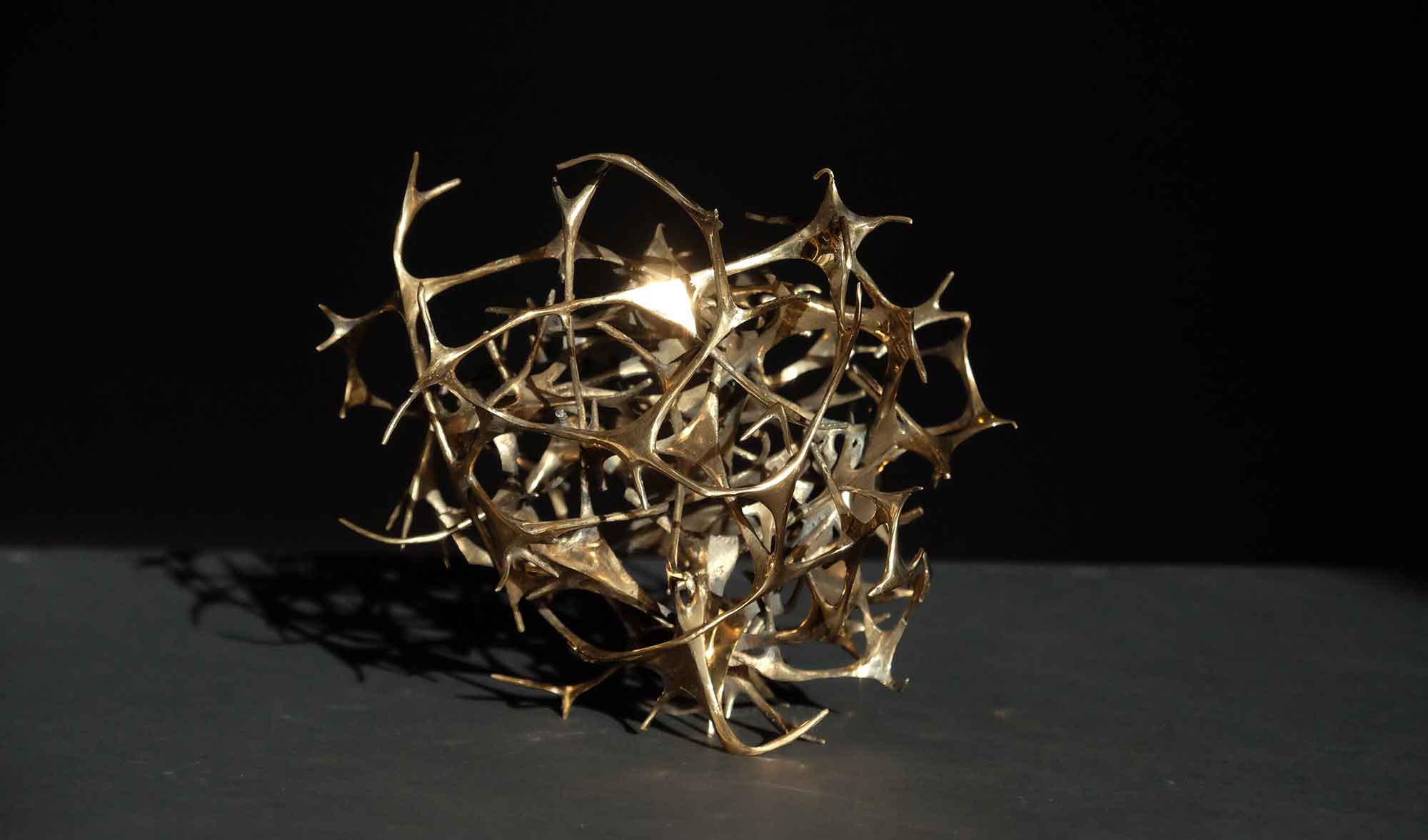Interview Lyndsey Walsh

Network scientist Dr Albert-László Barabási reveals the hidden order in the chaos we find in complex systems. As a pioneer in network science, Dr Barabasi is credited for discovering scale-free networks, which describe natural, technological, and social networks with particular hubs or common connection points, which can have an unlimited number of branching nodes to different variables. Research into scale-free networks has provided the world with the quantitative tools to explain the relationships of complex phenomena in existing and interacting systems like the World Wide Web, the neurons that make up our brains, and even fake news.
Dr Barabasi founded the BarabásiLab at Northeastern University, where he is the Robert Gray Dodge Professor of Network Science. The BarabásiLab explores the aesthetic and visual languages of connectivity and networks. Hidden Patterns, the first BarabásiLab retrospective, weaves together 25 years of research on culture, society, nature, and art to present 2D and 3D visualisations and data sculptures at the Ludwig Museum in Budapest, Hungary. In addition to the BarabásiLab’s artistic ventures, their research focuses on a wide variety of topics ranging from measuring the World Wide Web’s diameter to mapping the cells’ genetic networks in a body. The barabasiLab has also been a place for fostering successful artists under its wing, such as Kim Albrecht.
One particular interest of the BarabásiLab and Dr Barabási himself is understanding how artists and institutions are linked together. By investigating these interactions, the BarabásiLab can examine the factors involved in determining an artist’s future trajectory and career. This work has culminated in the Art Network project, which depicts the complex web connecting creative practitioners with museums and galleries.
At the core of Dr Barabasi’s research is the desire to understand how networks give rise to the world around us, how these networks come into being, and how they evolve over time. Dr Barabási is also in charge of a European Research Council project between Central European University and Boston and holds an appointment with the Department of Medicine at the Harvard Medical School. Dr Barabási and the BarabásiLab are researching the use of networks to identify and test treatment options for patients diagnosed with COVID-19.



For our audience members unfamiliar with your work, could you tell us a bit more about your process as a network scientist who engages with art?
Networks determine our life—the networks within our cells are responsible for our biological existence, our neural network for our consciousness, and we have a society because humans are not isolated from each other, but form social and professional networks. In the past 25 years, since my focus turned to complexity, part of our discovery journey involved developing networks’ visual language.
The massive datasets we mapped out forced us to invent the visual elements that are now part of network representation. As I was initially training to become a sculptor, I ended up appropriating forms of representations and materials from contemporary art. In the past five years, we started another journey, using data to understand artists’ trajectories and unveil the network-based patterns determining artistic success.
How did you come about forming the BarabásiLab, and how do you cultivate the lab’s interdisciplinary community with scientists and designers?
The BarabásiLab was formed as a science lab engaging physicists, biologists and computer scientists in our pursuit to understand networks and complexity. However, as the visualisation challenges have taken a central role in the lab in the past decade, we started to embed designers within the science teams. Their role is not to ‘beautify’ our visuals but to work with the scientists to understand the data behind the systems we study and help bring out the patterns behind them.
You have been quoted saying that art and science are part of the same discovery journey. Could you speak more about this journey and how you integrate the disciplines’ practices into the ways you conceptualise the interconnectedness of the world around us?
I have a single journey of discovery that aims to understand complexity. However, I rely on multiple languages to convey our results: research papers aimed at the scientific community, full with data, formulas, and algorithms; nonfiction writing, like my recent book, The Formula, where I try to translate our results into a narrative that is accessible for non-experts, and the visual journey, that brings alive the content, both for the research team, as well to the outside world. These languages are deeply linked- our visual works aid our research, and I must ‘see’ what I write about it for a general audience. Still, the scientific and the general audience narrative also shapes how we conceptualise visualisations.
Your work The Art Network in your upcoming exhibition Hidden Patterns: The Language of Network Thinking explores the links between artists and institutions to envision what aspects shape an artist’s future trajectory. Can you tell us what makes certain artists stand apart from the rest?
We tend to think that art is all about the object that the artist creates. In reality, the value in art is very contextual—it is determined by how the art community reacts to that work, by where it is exhibited, and how the different stakeholders, from galleries to museums, from curators to critics and fellow artists, perceive the work and its relationship to the various strands of art history.
In other words, multiple network effects determine artistic success. However, these networks are largely invisible to practitioners—even insiders see only specific segments of it. Therefore, we decided to rely on big data to map these networks out, make them visible, and use them to understand how, for example, where an artist starts affects her future success. We explore multiple factors that shape an artist’s success, from the exhibition history to gender and geographic location.
There is no single narrative that emerges, but multiple narratives of success, depending on the artist’s particular history. But remarkably, despite this diversity of narratives, we find artistic success highly predictable.
As a network scientist, you aim to reveal the hidden order amongst the chaos. Do you have any potential projects emerging from the chaos brought about by this past year’s events? Have any of these large and complex networks of events related to the pandemic and global social revolution inspired you?
One of my favourite projects is exhibited in the Ludwig Museum. We used mobile phone data to show, in a video, how the mobility patterns of individuals changed during the pandemic and how it changed the city. Yet, that work for me is not about New York City and not about human mobility, but it shows the beginning of the 21st century and the new normal that we are part of. But in a different work, we also show how we reduce chaos to order by using networks to select the few among 6,000 approved drugs that work for COVID patients.
What’s your chief enemy of creativity?
Fear of failure. Which is ridiculous, as only success is visible, and failure typically goes unnoticed.
You couldn’t live without….
…an ability to engage my mind.






